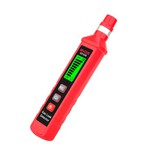Application of microscope in strategic emerging industry LED
1,Introduction of sapphire substrate materials
Due to the good insulating properties of sapphire, dielectric loss is small, high temperature resistance, corrosion resistance. Good thermal conductivity, in the mechanical strength is high enough. And can be processed into a flat surface. Transmission band is wide. Therefore, widely used in industry, national defence, scientific research in many fields. At the same time is also a good substrate material for a wide range of light-emitting diodes. In the generation of light-emitting diodes is * promising to become a high-brightness light-emitting diode family of sapphire substrate substrate by the next generation of fluorescent lamps, semiconductor light-emitting device substrate materials. At present, these high brightness light-emitting diodes have been widely used in advertising, traffic lights, instrument lights; and surgical lights and other fields. With the increasing application of high brightness light-emitting diodes.
LED Sapphire (Sapphire) is a single crystal of aluminium oxide, also known as corundum. Sapphire crystal has excellent optical properties, mechanical properties and chemical stability, high strength, hardness, washout resistance, can be close to 2000 ℃ high temperature under harsh conditions. According to research, there are only four substrate materials that can be applied to LEDs (see Table I below). Sapphire, as an important technology crystal, has now formed a more fashionable and mature applications in the LED industry.
2. Applications
Using Leica's polarising microscope it is possible to identify abnormal birefringence in sapphire crystals. Under certain circumstances, with the help of cone light microscope, you can observe the interference pattern of the crystal, determine the axiality of the crystal, used to observe whether the direction of each wafer is uniform, in order to judge the substrate is good or bad.
Leica microscope, scanning electron microscope in the production of LED epitaxial wafer, LED chip preparation process applications
1,Introduction of LED epitaxial wafer
LED epitaxial wafer growth of the basic principle is: in a piece of heating to the appropriate temperature of the substrate substrate (mainly sapphire and, SiC, Si), the gaseous substance InGaAlP controlled transport to the surface of the substrate, the growth of a specific single-crystal film. The current LED epitaxial wafer growth technology mainly uses organic metal chemical vapour deposition method (MOCVD)
2, LED chip introduction
LED chip, also known as LED light-emitting chip, is the core component of led light, which is also referred to as P-N junction. Its main function is: to convert electrical energy into light energy, the main material of the chip is monocrystalline silicon. Semiconductor chip consists of two parts, one part is P-type semiconductor, in which holes dominate, the other end is N-type semiconductor, on this side is mainly electronic. But when these two semiconductors are connected, a P-N junction is formed between them. When the current acts on this wafer through the wire, the electrons are pushed to the P region, where the electrons are compounded with the holes, and then energy is emitted in the form of photons, which is the principle of LED luminescence. And the wavelength of light, which is the colour of light, is determined by the formation of P-N junction materials.
3, Application:
a) Use SEM to detect the dislocation corrosion morphology information of the crystal surface after epitaxial wafer growth;
The significance provided by the dislocation corrosion morphology of the crystal surface: the dislocation corrosion of each sample presents different shapes and the crystal belongs to the point group and the structure of the crystal is determined by the role of chemical corrosive agent is to destroy the molecules and atoms within the crystal interactions between the bonding, bonding force of the smaller first to be destroyed, so as to form a certain shape of the corrosion of the corrosion of a particular spot, so a good image of the corrosion of a corrosion of the spot has been the details of the ** rendering, can be fully embodied in the The quality of the crystal growth pattern.






